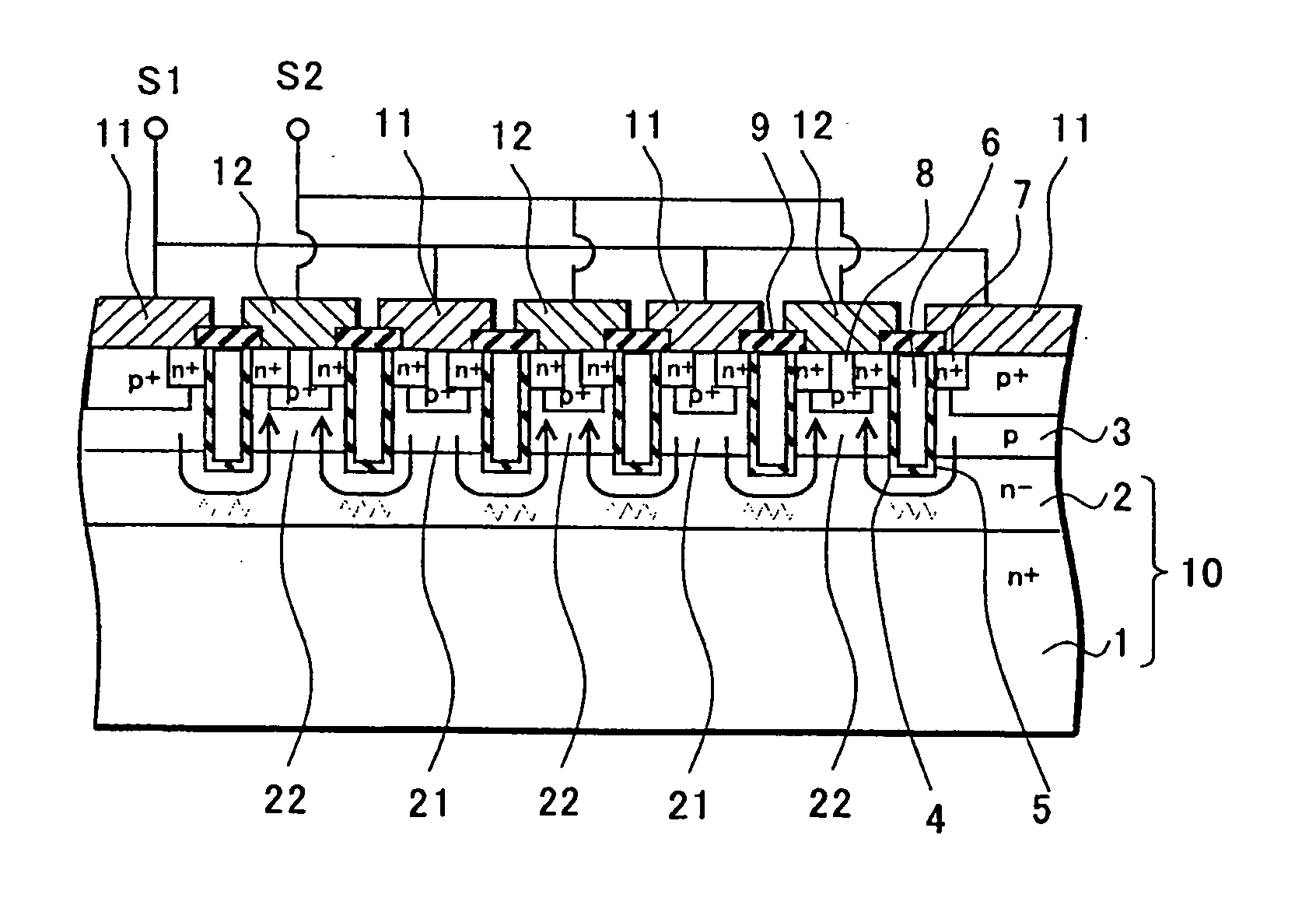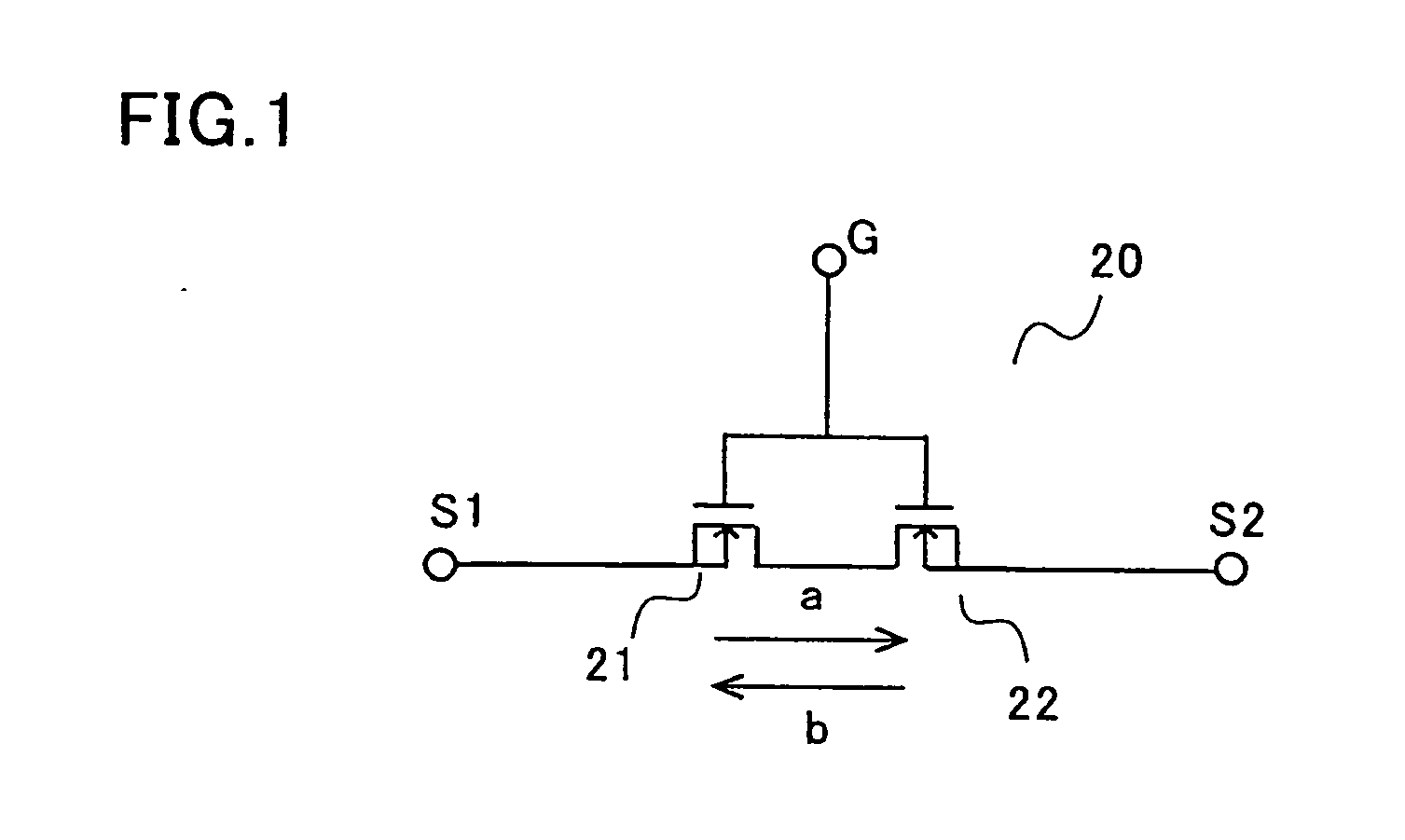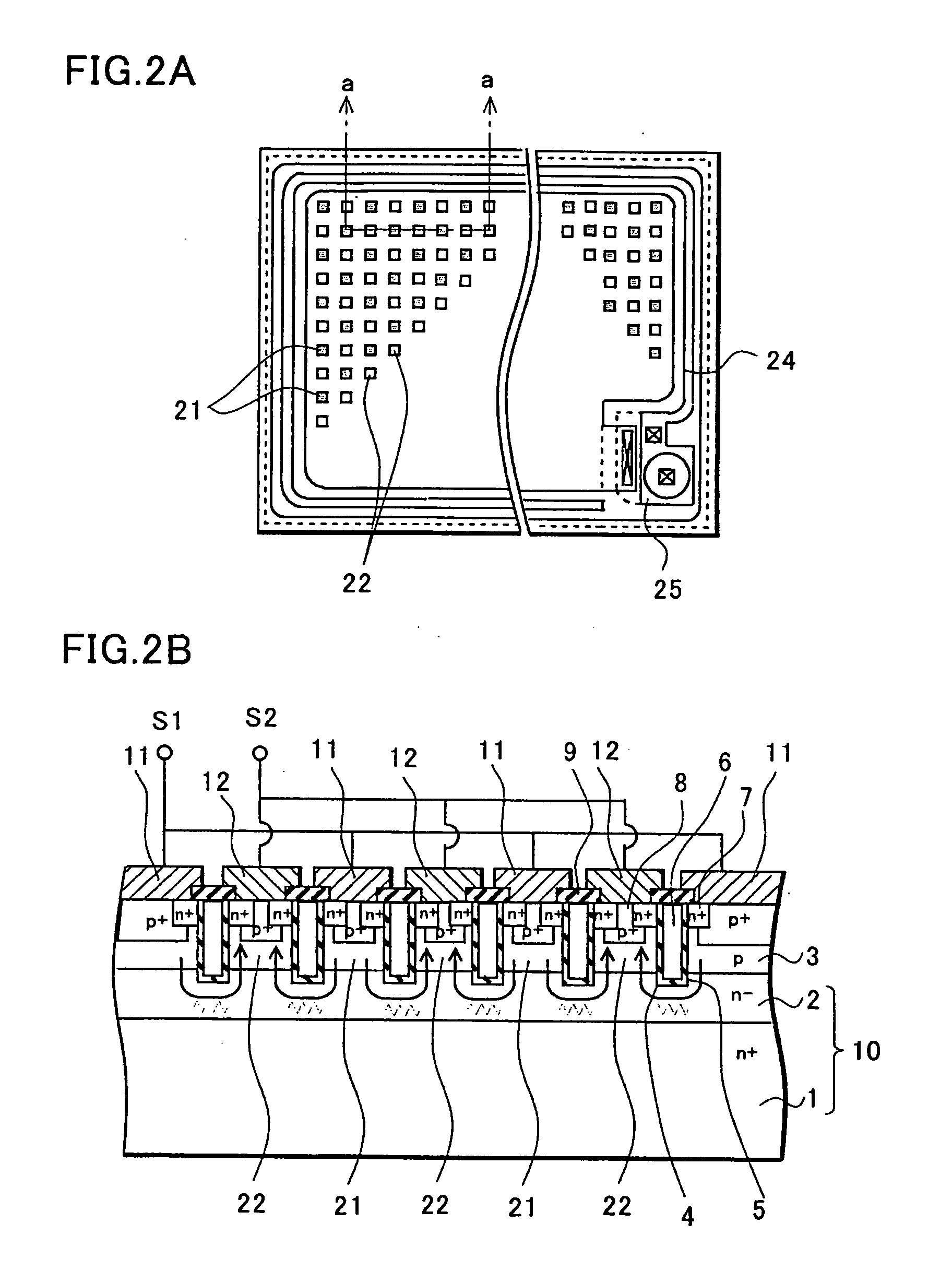Semiconductor device
a semiconductor device and on-resistance technology, applied in the direction of semiconductor devices, electrical equipment, transistors, etc., can solve the problems of hindering the reduction of on-resistance in the semiconductor device, reducing connection-resistance, and high drain region resistance
- Summary
- Abstract
- Description
- Claims
- Application Information
AI Technical Summary
Benefits of technology
Problems solved by technology
Method used
Image
Examples
Embodiment Construction
[0028] With reference to FIGS. 1 to 4, a detailed description will be given of an embodiment of the present invention by taking an n-channel MOSFET as an example.
[0029]FIG. 1 is a schematic circuit diagram explaining a semiconductor device 20 according to the embodiment.
[0030] The semiconductor device 20 according to the embodiment is a MOSFET in which a plurality of MOS transistors 21 and a plurality of MOS transistors 22 are arranged on a substrate forming a drain region. The MOSFET 20 is connected to a gate terminal G and is controlled by a control signal applied to the gate terminal G. The gate terminal is only one.
[0031] The MOS transistors 21 and 22 are integrated on one chip, and terminals to be lead out externally are the gate terminal, a first and second source terminals S1 and S2. The drains for the MOS transistors 21 and 22 are common and connected to one another, whereby they are not lead out externally as drain terminals.
[0032] Different potentials are applied to th...
PUM
 Login to View More
Login to View More Abstract
Description
Claims
Application Information
 Login to View More
Login to View More - R&D
- Intellectual Property
- Life Sciences
- Materials
- Tech Scout
- Unparalleled Data Quality
- Higher Quality Content
- 60% Fewer Hallucinations
Browse by: Latest US Patents, China's latest patents, Technical Efficacy Thesaurus, Application Domain, Technology Topic, Popular Technical Reports.
© 2025 PatSnap. All rights reserved.Legal|Privacy policy|Modern Slavery Act Transparency Statement|Sitemap|About US| Contact US: help@patsnap.com



